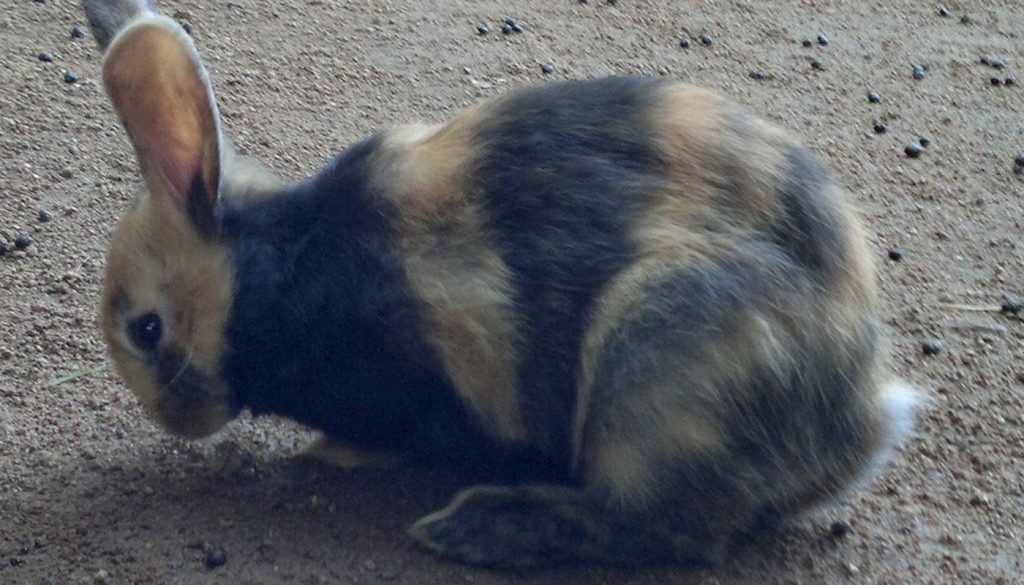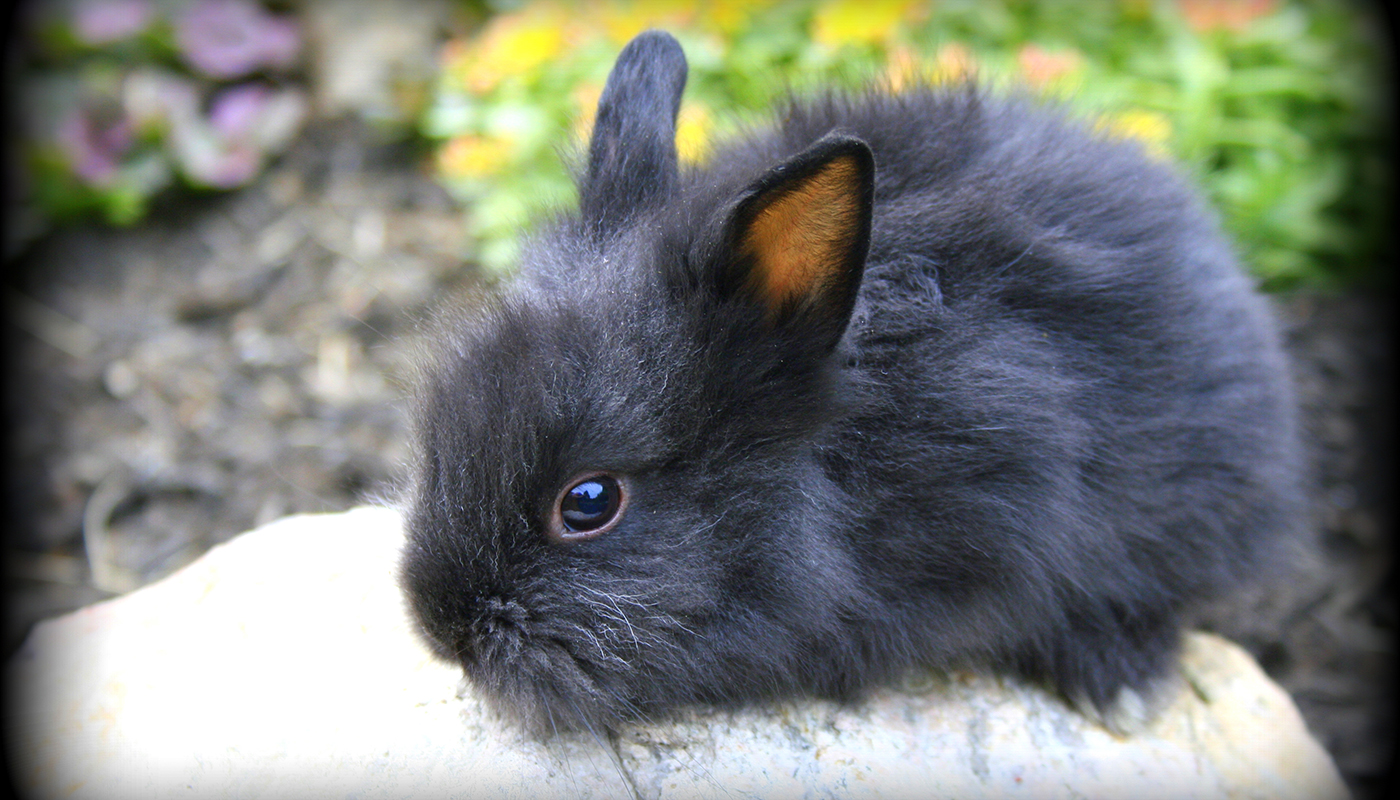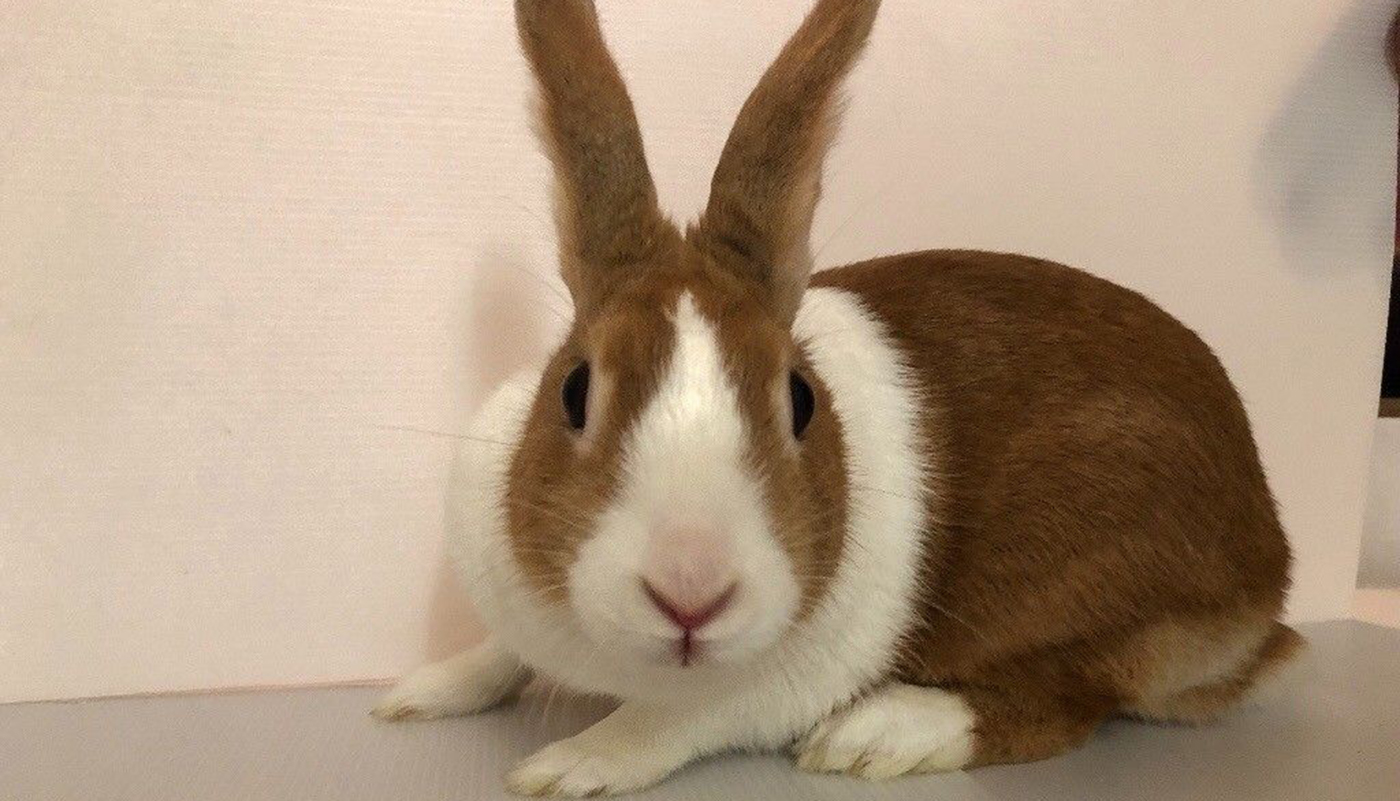
The French Harlequin rabbit breed is a breed that is recognized by its coloring and markings instead of its body type or fur.
They are a medium sized rabbit with their ideal weight being around 6.5 to 8 pounds.
They make great show rabbits for those wanting a rabbit that has beautiful colors and markings. They also make good family pets and are quite lively and fun.
BREED PROFILE OVERVIEW
|
|
|---|---|
| Breed Name: | Harlequin |
| Other Names: | Magpie or Japanese |
| Country of Origin: | France |
| Breed Purpose: | Exhibition and, pets |
| Breed Size: | Large |
| Breed Weight: |
Female/Doe: 7 to 9.5 lbs. Male/Buck: 6.5 to 9 lbs. |
| Breed Color(s): | The most common variety is the Black and Orange variety, they are also accepted in Lilac, Blue, Brown, Black, Chocolate, and Magpie |
| Physical Appearance: |
The Harlequin rabbit comes in two types there are the Magpie types that are usually white with some other color variation such as blue, black, lilac or chocolate. Then there is the Japanese variety that is either orange mixed with another color such as black, blue, chocolate or lilac. The perfect Harlequin rabbits have long erect ears that are ideally different colors. Most of their body is usually split into two different color types. Both varieties have a medium sized wedge-shaped head, large eyes, and long erect ears. Their bodies are long and semi-arched with a nice neckline swooping into the body arch with their legs held parallel to their bodies. Their fur is short and soft it does not require any special grooming. |
| Temperament: | They are active, playful, loveable, curious and full of fun |
BREED CHARACTERISTICS
- They have a decent sized litter and the females make very good mothers. Most rabbits have good maternal instincts and some breeds can be a bit testy and protective when they have young. They can also be uncharacteristically moody during mating season.
- Their young open their eyes around 7 to 14 days with an average of 10 days after birth. When their eyes have opened, they can start to be introduced to food such as alfa pellets and water.
- Even when the young start to eat it does not mean they are quite ready to be weaned from their mothers. The mothers will know when it is time to wean her young. It is important for the baby rabbit’s health, growth, immune system and development of a proper digestive system that they do not be removed from their mother for at least 8 weeks. They usually require her milk for a minimum of 8 weeks after birth.
- Their average lifespan is 5 to 8 years although there have been some breeds that have lived to 10 years with the proper care.
| Good Pets? | They do make good pets for families with children, novices, singles and people living in apartments. They are suited as both an indoor and outdoor pet. |
| Child Friendly? | Children should be supervised around animals and properly taught how to look after them and handle them. Rabbits can bite and scratch |
| Ideal Climate: | All climates – rabbits should never be left outside without proper shelter and housing that must be raised off the ground and predator safe. |
| Conservation Status: | Listed by the *ALC Status/Rarity: Listed as watch |
| Recognized by the ARBA? | Yes, they are a recognized breed please see their club website for various information on the standard of the breed. |
| Rabbit Associations/Clubs: | American Harlequin Rabbit Club |
| Where to buy them? | The American Harlequin Rabbit Club is a good resource for information on local breeders. The USA Rabbit Breeders Directory is a useful resource to find breeders, clubs, and information about the breed. |
| Note: *ALC stands for American Livestock Conservancy | |
GENERAL INFORMATION
For a slicker more glossy or shiny pelt, it is advisable to groom them every two to three weeks. During the molting season, it is advisable to groom rabbits every week to remove stray hairs.
Rabbits can be quite lively and energetic and need quite a bit of exercise and stimulation. It is a good idea to have a nice safe and secure run for them to play in and stretch their legs.
Toys, tubes and various obstacle courses for them is a good way to help them expend some of their energy and they are really fun to watch at play.
They are also sociable animals that do like to have a friend or two to play with.
Regular health and critter check once a week or every second week should become a habit. This will help to keep your rabbit(s) in excellent condition and health. Grooming does not require a lot if their coats are low maintenance. But it is a good idea to give them a nice gentle brushing to help remove any excess hairs regardless of the length of their coats.
It is also a good idea to check on the state of their teeth to ensure that they are not too long and causing the rabbit any discomfort.
Rabbits teeth never stop growing and getting fresh hay on a regular basis helps to control the growth of their teeth.
Rabbits need a good diet of quality pellets that are filled with their daily nutritional requirements. They do love dandelions, cabbage and various fruits as a nice tasty treat.
Rabbits that have quite a short coat are not really at risk for most of the digestive problems long fur seem to cause rabbits. They can still get other ailments such as flystrike, ear mites or overgrown teeth. These can all be controlled/maintained or avoided altogether with the proper health and grooming care of the rabbit(s).
If you have two rabbits and do not want to breed them it is possible to spay female rabbits and neuter male rabbits.
The females can be spayed as young as four months old, but vets prefer to wait until they are at least six months old before doing so.
The young males can be neutered as young as found months old.
Rabbits, just like any other pet, should be dewormed on a regular basis. Check with your local vet for proper guidance on the administering of worm medication to your animals.
HISTORY
When the breed was first known it was called the Japanese and there were no Magpie color variations to the breed. The first of these Japanese rabbits to be brought to England had an uneven patch of black and yellow markings. By selective breeding of these rabbits, a more uniformed rabbit of the breed was developed gradually eliminating the imperfect markings.
In 1919 the first Japanese Rabbit Club was formed in England and this led to more interest in the refining of the breed. Eventually, a proper standard was drawn up for the breed and color variations agreed upon to the standards it is at today.
Video
USEFUL LINKS
- American Rabbit Breeders Association
- Fur Commission USA
- North American Meat Institute
- American Livestock Conservancy
- Animal Shelter (ASPCA)
- American Veterinary Medical Association
- American Animal Welfare Society
- American Animal Control
- American Society of Animal Science
- United States Department of Agriculture
- United States Department of Agriculture – Rabbit Meat
 Silver Marten Rabbit – Everything You Need to Know
Silver Marten Rabbit – Everything You Need to Know Blanc de Hotot Rabbit – Everything You Need to Know
Blanc de Hotot Rabbit – Everything You Need to Know English Angora – Everything You Need to Know
English Angora – Everything You Need to Know Top 10 Best Small Rabbit Breeds to Keep as Pets
Top 10 Best Small Rabbit Breeds to Keep as Pets Silver Fox-Satin Rabbits: A Unique Crossbreed
Silver Fox-Satin Rabbits: A Unique Crossbreed Dutch Rabbit – Everything You Need to Know
Dutch Rabbit – Everything You Need to Know Tan Rabbit – Everything You Need to Know
Tan Rabbit – Everything You Need to Know Argente Brun Rabbit – Everything You Need to Know
Argente Brun Rabbit – Everything You Need to Know Palomino Rabbit – Everything You Need to Know
Palomino Rabbit – Everything You Need to Know 13 Giant Rabbit Breeds You Love to Know
13 Giant Rabbit Breeds You Love to Know French Angora Rabbit – Everything You Need to Know
French Angora Rabbit – Everything You Need to Know